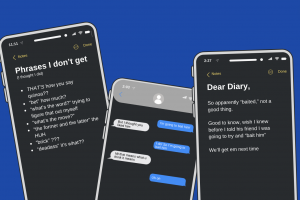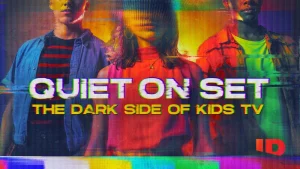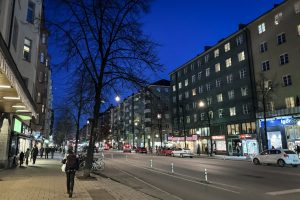The power of social media: Instagram is bringing salvation to assault survivors
Social media is bringing salvation to assault survivors
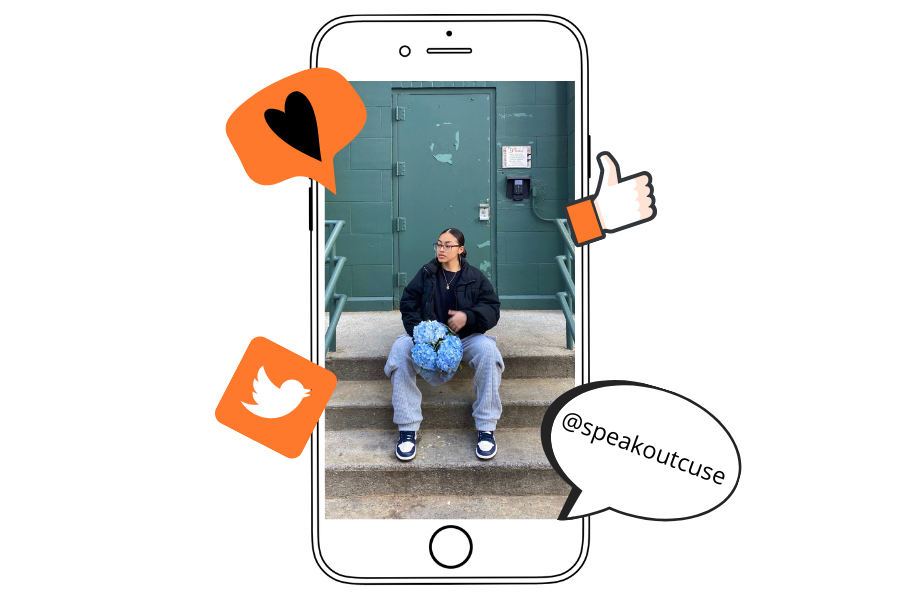
They bought plates specifically for moments like this, for times when life was so painful that they required a physical act to release the hurt. Stefany Lema-Rodriguez’s roommate Yuderis Verges purchased them over a year ago when they struggled to deal with their own stuff. The plates provided a way for them to act on their shared philosophy that sometimes life really, really sucks, and something needs to break so you can keep yourself together.
Today delivered one of those days.
Rodriguez decided to use an anonymous Instagram page for sexual assault survivors at Syracuse University — @speakoutsu — to share the experience of their sexual assault and to warn others about the man who assaulted them. Created for Black, Indigenous and other survivors of color, the digital platform provided Lema-Rodriguez a supportive space. It also revealed mostly male assailants of the same demographics and caused tensions within underrepresented groups at the university. The page lasted four days in late July, and after threatened with legal action and consistent reporting on the Instagram app, those who created the page took it down.
View this post on Instagram
But submitting their story to @speakoutsu was not exactly the act that led Lema-Rodriguez and Verges to retreat to the backyard to smash plates. Lema-Rodriguez felt ready to out the abuser. They believed this anonymous platform served to warn other students about him while maintaining a level of safety for themself. But minutes after the post went up, they received a call from the man featured in the post. As Verges watched the conversation, Stefany became visibly upset, a rare reaction for their friend known for a stern exterior. Their thick, black rectangular frames and impeccably slicked baby hairs (not a strand out of place) amplified Lema-Rodriguez’s seriousness. That no-nonsense facade came courtesy of all the nonsense they had worked to unlearn (specifically regarding capitalism, patriarchy and gender performativity) with the goal of decolonizing their mind.
That summer of Stefany’s plate smashing coincided with many events that pushed Americans in every state to participate in more than 10,000 demonstrations related to Black Lives Matter and the murder of George Floyd. Scholars such as Ibram X. Kendi, Ijeoma Oluo and Robin DiAngelo appeared on multiple best-seller lists. Although former President Barack Obama dismissed “Defund the Police” as a “snappy slogan,” a growing number of Americans began chanting it in the streets, and many expressed an interest in abolitionist politics.
But Lema-Rodriguez lived through many experiences similar to those that had ignited the protests and conversations of that summer long before the most privileged in this country decided to add these topics to their reading lists. They grew up in Brooklyn to a working-class family from Ecuador. Their father worked as a taxi driver; their mother a domestic worker. At 15, they shared with her parents the sexual abuse they had endured for years by a family member. But they did not want them to involve the police. They believed they would not feel any safer even if the man was behind bars, and their parents ultimately respected their decision.
“That conflicting thought about the police has always been there,” they said. “The more I learn about the systems, the mistreatments, the history, it’s led me to knowing that’s not the form of justice I want.”
Later, as a college student, they teamed up with Melaica Delgado — a Black student organizer who worked with Black Lives Matter in her home state of Massachusetts — and other Syracuse University students to create We Believe Survivors, a collective of BIPOC organizers that supports survivors in response to @speakoutsu. Because of COVID-19 and quarantine regulations, the group of eight organizers worked mainly through group chats and social media platforms to provide resources, individual support and Instagram live streams. For Greek Week, for example, one live-stream event discussed sexual violence in campus fraternities with members of Greek organizations.
“I feel like Black women in this specific topic are very empathetic,” Delgado said. “I think they’re empathetic in a way that many other races and identities can’t be because of all the trauma that Black people face.”
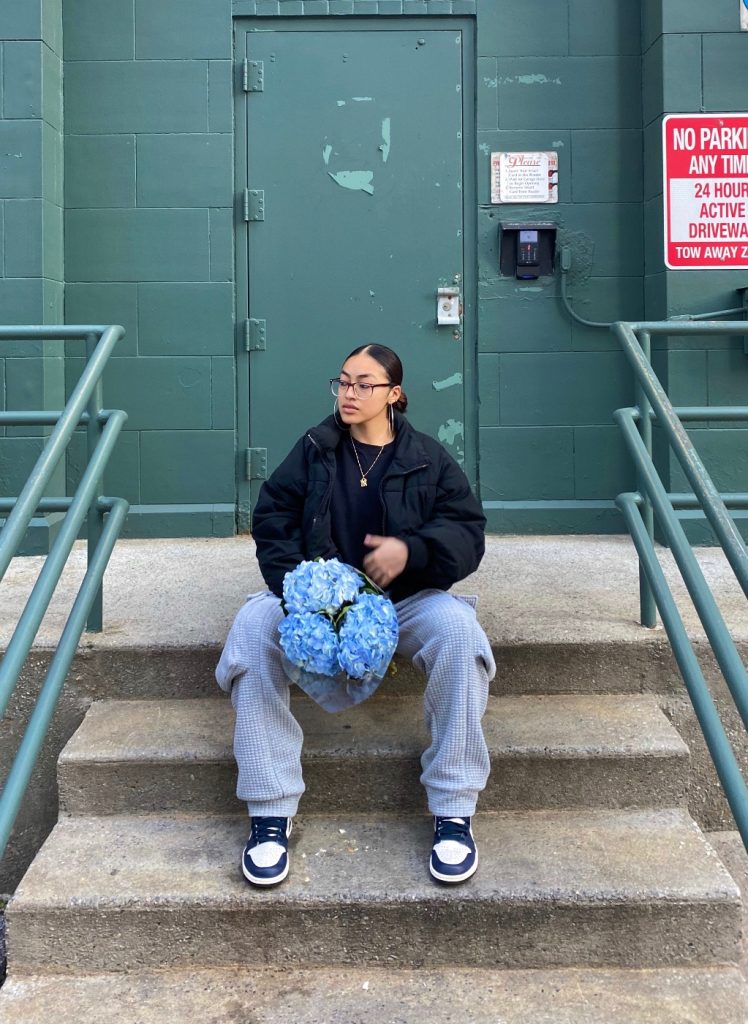
The mythology of the white victim
According to the National Center on Violence Against Women in the Black Community, one in four Black girls will be sexually abused before the age of 18. The Institute for Women’s Policy Research (IWPR) reports that more than 20% of Black women are raped during their lifetimes — a higher share than among women overall. For Black women, this violence also carries an increased likelihood of dire consequences. Black women are two and a half times more likely to be murdered by men than their white counterparts, according to the IWPR. But for every 15 Black women who are assaulted, just one reports her rape.
Yet, white women often serve as the face of sexual assault. Tarana Burke, a Black woman, created the #MeToo Movement in 2006. Still, more than a decade later, wealthy, white celebrities such as Jennifer Lawrence and Alyssa Milano commandeered the movement and its image when they leveraged the hashtag during the Harvey Weinstein sexual abuse allegations. Other factors contribute to the whitewashing of rape. White women report sexual assault more than any of their nonwhite peers, which reinforces the myth that as a demographic, white women experience this violence more than other women.
Yet, End Rape on Campus, a nonprofit dedicated to ending campus sexual violence, reported in their Survivor of Color Prevalence Rates that while white women make up 80% of reported rapes, Black women, Native American and Alaska Native women and mixed-race women experience rape at higher prevalence rates. Asian and Pacific Islander women are less likely to report rape than any other group, according to the report. Latina women who are married are less likely than other women to describe forced sex by an intimate partner as rape. Sexual assault prevention advocate Chardonnay Madkins said that racist stereotypes take victimhood away from survivors of color — such as Latina women being seen as exotic or fierce and East Asian women being labeled as submissive or docile.
Aishah Shahidah Simmons, the producer, writer, and director of “NO! The Rape Documentary,” a film released in 2006 that analyzes intra-racial rape in Black communities, said that racism plays a key role in deciding who is allowed to appear as a victim. Anti-Blackness allows non-Black people to see Black women as “unrapeable,” but, she said, this view has been internalized by Black people as well.
“If racism ended right now, we’re not safe. Frankly, I was not raped or molested by a white person,” Simmons said. “It doesn’t mean that I’m not impacted by white supremacy and racism every day as a Black woman. But this notion that racism is the only harm that’s destroying our communities is false.”
The sexual violence that Simmons highlights in her documentary is intra-communal, and it is the most common way Black women experience sexual assault. It also informs Black women’s lack of reporting. Black women often refuse to report due to a widespread distrust of law enforcement and a pressure to protect Black men from the prison industrial complex. Simmons sums up this loyalty by using a line from “Surviving the Silence: Black Women’s Stories of Rape” from Dr. Charlotte Pierce-Baker, an emerita professor of women’s and gender studies at Vanderbilt University: Black women are taught they are Black first, then women.
There is also a historical context that explains why Black survivors are discouraged from speaking out and are often not believed. Simmons points out that this originates from the enslavement of Black people in the Americas. Following the end of legal slavery, there was no precedent for holding people accountable for the rape of enslaved Black women because they formerly were viewed as property. A 2020 study from the “American Journal of Human Genetics” shows just one consequence of the constant and pervasive sexual violence against enslaved Black women in the United States: the DNA of enslaved women is 1.5 times more represented in the modern gene pool than comparison to the DNA of enslaved men.
But the end of chattel slavery failed to eliminate the belief that Black women were incapable of being harmed.
“We have to prove that we’re upstanding and pure so that if something happens to us, if we’re sexually assaulted, that people will come to our aid because no one has come to our aid,” Simmons said. “We’re not getting revered by white society, and too often in our own communities and families, we are blamed.”
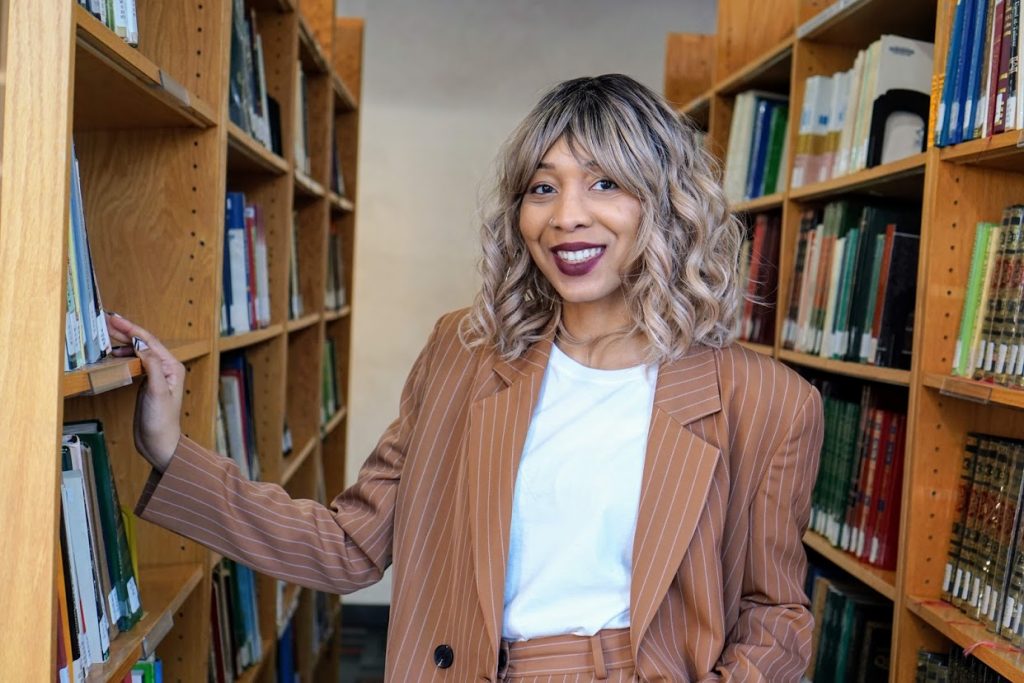
Safety and support found online
Over Zoom video chat, Patrice O’Garro radiated warmth, grinning between our exchanges. Maximus, her 3-year-old son, added to the color of our conversation with occasional outbursts. “Like the Gladiator movie,” she added when introducing her son.
At 26 years old, O’Garro doubles as a mom and student studying education, society and human development at University of California, Riverside and runs a blog via Facebook and Instagram called Survivors of Color. Since its first post in Aug. 2019, the Instagram page has gained more than 6,000 followers. Her online community is small but impactful. On Dec. 21, she posted an Instagram graphic that stated, “I understand that I may never be the same person I was before I met him. But I’d sure like to get some of her back.” Eight comments underneath the post show O’Garro replying and liking heart emoji-filled messages that say, “I miss parts of that girl too,” “Definitely understand this!” and “We NEVER stop learning!” Her followers often post discussions or questions in the comments, and they always feature messages of positivity.
On Jan. 6, a post about whether a scene in the new Netflix Original Series “Bridgerton” represented consensual sex or sexual assault received 37 comments, including O’Garro’s responses in agreement or asking others to elaborate further.
View this post on Instagram
Since its launch, O’Garro has done Instagram Live sessions with transformational coach Olivia Lee and sexual assault counselor Tiffany Green, teamed up on a panel about race and sexual violence with life coach Astrid Ferguson and filmmaker Cheyenne Tyler Jacobs and did a social media takeover for End Rape on Campus.
Survivors of Color served as her first intentional effort to heal from an abusive relationship in which she was sexually assaulted in 2014. After her assault, she couldn’t find a sexual violence resource that she trusted to understand her experience as a Black survivor. O’Garro, who experienced abuse by a white man from a wealthy family, didn’t feel that she could turn to the police.
“I just wasn’t confident about my experience in general,” O’Garro said. “A lot of the crisis centers, they don’t have too many people of color, specifically Black people who are working there. I just didn’t feel like I had a safe place to go.”
While some Black women report the crime of rape, End Rape on Campus suggests that O’Garro’s story represents the more common narrative. Instead of the police or a support resource, the internet became her treatment. O’Garro is not an expert or a licensed therapist, and every graphic and post — from “Trauma doesn’t disqualify us from love” and “Sexual violence does not discriminate” — is meant for herself as much as they are meant for her followers.
In fact, Black women have always led conversations about sexual assault on social media platforms, said Madkins, an activist, speaker, and writer who advocates for sexual assault prevention and has worked to bring attention to sexual assault on the campuses of historically Black colleges and universities. She was a senior studying at Occidental College in 2014 when she was sexually assaulted during a visit to see her friends at Hampton University. At the time, she was confident that a historically Black university would treat sexual assault more seriously than a predominately white institution such as Oxy, as she calls it.
“[HBCUs] have more rules around respectability. I would see people get expelled for underage drinking,” she said. “I thought they were going to be stricter around sexual violence.” After the assault, she said her case with the university led nowhere and was “swept under the rug.” She reached out and connected with more female survivors who attended HBCUs and found that they too failed to receive assistance from their institutions.
For Madkins, her experiences and conversations prompted her to examine how Black women have used social media to call attention to rape culture. Beyond #MeToo, she said other hashtags highlight sexual assault in Black communities, including #YouOkSis and #FastTailedGirls — both Twitter trends respectively started by writers Feminista Jones in 2014 and Mikki Kendall in 2013.
“The stereotype for ‘fast tailed girls’ is that Black girls are the ones who are going to seek out older men. Whereas the reality of it is these old men, like R. Kelly, are hanging out at our schools,” Madkins said. “The hashtag #FastTailedGirls has allowed us to look at the reality of things, as opposed to people’s made up theories that they have developed in their head because of these stereotypes.”
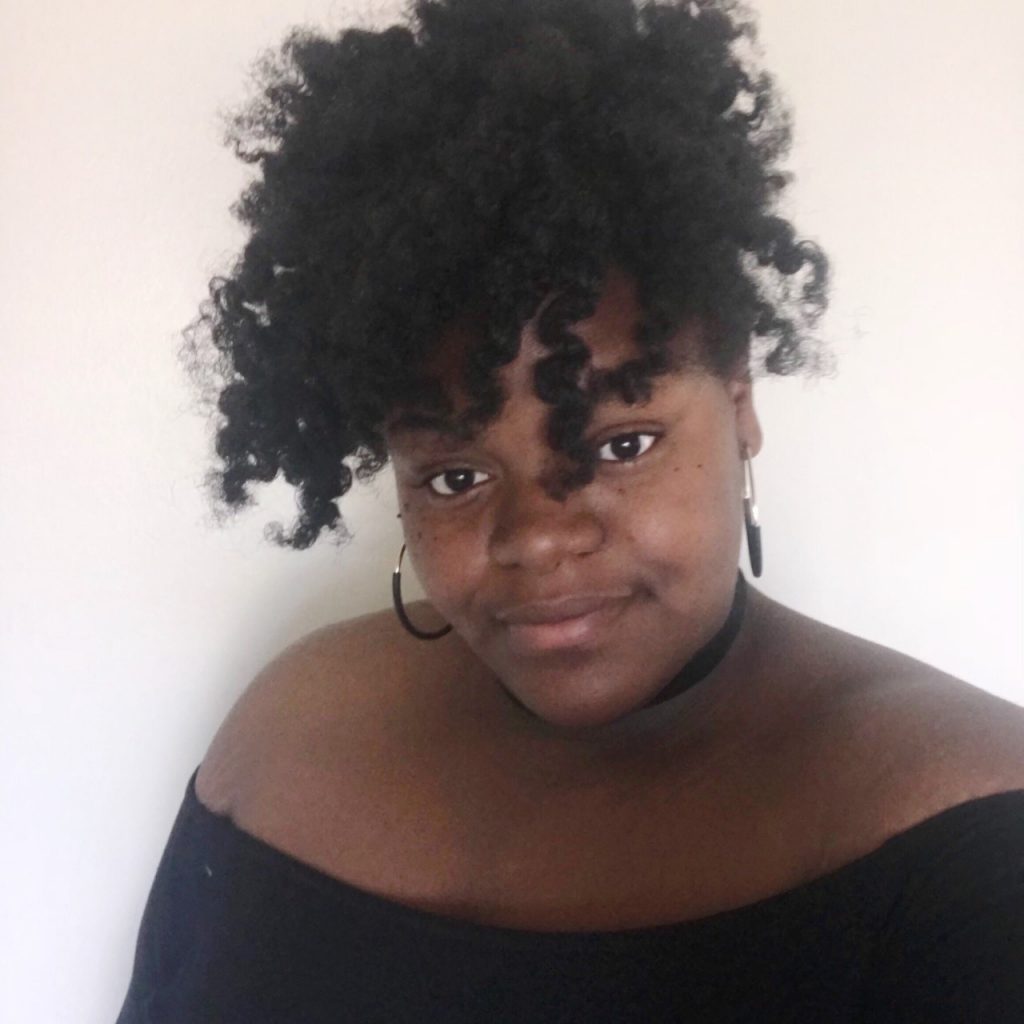
Like Lema-Rodriguez, Keturah Raymond, an alumna of Syracuse University, also sought out @speakoutSU to share her experience. The stories she read on the account troubled her and reminded her of her own painful experience. When she was a student at Syracuse, officers from the Title IX office contacted her about a sexually explicit video of her taken without her consent by someone in a fraternity. Many of her friends were part of that fraternity. She described some of them as being like her brothers. But not one of those brothers told her about the video. After she learned of it, it changed her life dramatically.
“I cut off a lot of people, and I cut off that entire chapter,” Raymond said. “It’s like, you couldn’t be better, so what am I supposed to do? I can’t force you to be better.” The stress of the situation also put Raymond behind a semester, but she found the support from Student Support Services and the Title IX Office to be helpful.
Reading the posts of others on the account made her feel a sense of responsibility to tell her story. She warned her close friends before she went public with it. “I let my friends know, ‘I’m about to shake the f—— table,” Raymond said. After she posted, she turned off her phone and let it be. When she shared what happened to her on social media, one of her sorority sisters reached out to her and added her to a support group. “So many people reached out saying they’ve been through the same thing or just reaching out with their support,” said Raymond. “It was me being able to tell my story and just let it go.”
An elusive quest for healing
Using internet platforms, specifically social media, to address sexual assault gives voice to survivors through virality and trending hashtags. A violation silenced at home suddenly becomes an experience listened to by people in other states and other countries. Digital forums provide less risk in sharing, too, if a person decides to assume an alias or an anonymous profile. Madkins said that sometimes a post that gains internet attention can lead to real-life consequences.
Social media played a role in campaigning for Aaron Persky, the judge who handled the sentencing of former Stanford University student Brock Turner, who sexually assaulted Chanel Miller while she was unconscious and received six months in jail and three years probation (and was released after three months), to be ousted by voters when he went up for reelection. Filmmaker Simmons said that social media’s reaction to the docuseries “Surviving R. Kelly” played a role in his incarceration. “I don’t believe in jails, but I definitely think that he needed to be held accountable,” Simmons said. “And I think it played a huge role in that, social media. I mean, it was everywhere.”
But there are limits to social media’s ability to heal survivors from marginalized communities. Therapist and CEO and founder of Black Girls Can Heal Inc. Jaquasia Vandross’s Instagram account @blackgirlscanheal_ boasts almost 37,000 followers, but she’s doubtful that just following the account will lead to real healing. “The posts that we post and the Instagram Lives we have with other therapists are just extra resources,” said Vandross.
Although she is a therapist, she cannot provide real one-on-one sessions with people on Instagram or Facebook. If @blackgirlscanheal_ receives a direct message asking for direct counseling or help in an emergency, the best they can do is point that person in the direction of the proper authorities. Her New York-based team often highlights and collaborates with other Black female therapists and mental health advocates on social media to provide those stepping stones for followers to find healing in real life.
View this post on Instagram
But the internet provides her with the ability to reach women from “all walks of life” online. In December, they launched a healing support group to connect with Black women via Zoom for weekly sessions that last six weeks. “It’s something we would’ve never been able to do if it wasn’t for COVID,” Vandross said. “We would’ve been dealing with people from the five boroughs rather than people from different states.”
For O’Garro, Survivors of Color continues to support her healing. It took her five years to get to a point where she could do anything to address what happened to her, and for now, her social media pages serve as a form of therapy. It helps her verbalize her feelings and work toward being comfortable in sharing her experience with her close friends and family. “Social media allows us to find our communities without the kind of judgment we would face in person,” said O’Garro. “Hopefully, we will get to a point where we can have those conversations in real life.”
For Lema-Rodriguez, healing required more than smashed plates and the @speakoutsu post. During a virtual tarot card reading, the reader asked them what made them happy. They blanked. But they recently began journaling again and has tried to make time for healing that is separate from community work. Their attempts at therapy have been both successful and unsuccessful. Their favorite resource is Fearless Femme 100, a community group of “BIPoC Trans femmes GNC/NB folks, and Cis women” that prioritizes mental health and wellness. They found the group on Instagram.
“They didn’t refer to you as a client, so the hierarchy of powers wasn’t there,” Lema-Rodriguez said. “My peer counselor was transgender, and they were anti-capitalist and anti-patriarchy, all the things that I was looking for. The person who I was talking to understood where I was coming from and was trying to help me decolonize my mind.”
When Lema-Rodriguez was no longer able to access the program (they said it was cut short due to a lack of funding), they struggled to figure out how else to deal with their personal trauma. They often finds themself overwhelmed and conflicted about her participation in a capitalist and privileged society while also being gender-nonconforming, Latinx, working-class and a repeat survivor of sexual assault. When they had time later to revisit the question from the tarot reading, they envisioned themself in an environment both harmonious and peaceful.
“My visual of that would be laying in a field of grass with trees and silence, and looking up at the sky and just being at peace. Just breathing and being in tune with nature,” said Lema-Rodriguez. To recreate that daydream, they found a patch of grass in a park across the street from their house in Syracuse and went there to stare at the clouds.

